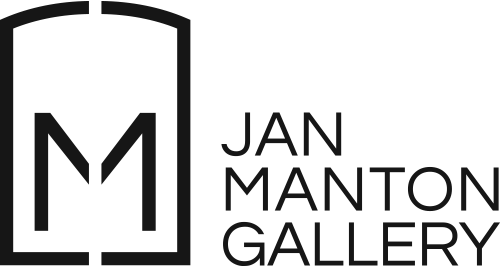Natalie Lavelle Exhibition Essay by Dr Louise R Mayhew | 24.02.22
Artwork: Untitled (white), 2021, acrylic on French linen, 168 x 213 x 4cm. Photograph by Louis Lim.
Natalie Lavelle: Ways of Being
By Dr Louise R Mayhew
Brown. Blue. White. Natalie Lavelle’s newest body of work exclusively uses these colors. Each conjures the natural world: dark handfuls of dirt, midday skies, the ocean’s depths, and a landscape lost to a thick Winter’s snowstorm.
Thinking of these paintings as transformations of nature operates in two spatial directions: as an endless spilling out and an almighty gathering in. If you stand close to Lavelle’s larger canvases, so they fill your field of vision, you might imagine their washes of colour stretching forever, echoing the vastness as the Earth. Yet if you stand back from each painting to see their divisions—sliced in halves and thirds, and always marked with Lavelle’s signature edging strips of (semi-)exposed linen, it feels as though she has corralled Nature’s infinity into the neat geometry of her canvas.
Curiously, this distanced perspective also enables us to see the details in Lavelle’s paintings. As our eyes wander, we discover the white splash and hidden blue of Untitled (White), the broad brushstrokes of Untitled (the way of things), and the delightful bleeds of Wordlessness (a sense of the present), where paint creeps into Lavelle’s vacant vistas.
Such contradictions are common to Lavelle’s work. The artist’s control and spontaneity, the work’s materiality and pictorial illusion, and the audience’s immediate apprehension versus delayed exploration, mark further surprising polarities. Essential to this series is Lavelle’s intertwining and interchanging of Descartes’ mind/body dualism: an interest she deftly signals by updating John Berger’s Ways of Seeing (1972) with her exhibition title Ways of Being.[1]
In art history, the search for painting’s essence—it’s foundational way of being—manifested as an emptying out. Artists shed three-dimensional space, then realism and expression. In late Modernism, the physical objet d'art dematerialised altogether, as artists created ephemeral performances and espoused esoteric ideas. Lavelle’s ontological investigations operate in the opposite direction. Her practice adopts an additive methodology, canvassing painterly possibilities and adding them back into our shared understanding of paint.
She begins with the material construction of her canvas. The deliberateness of her timber frames, and the meticulousness of her stretched, folded, and stapled linen come to the fore in subtle clues, such as the visual cohesion of the stained wood and coloured wash in Untitled II (Burnt Umber Light). Equally, Untitled (Burnt Umber and Raw Umber) pairs together darker shades. Lavelle’s diverse painting techniques (splashes, washes, layers, divisions and bleeds) and her range of titles (which variously position her works as portraits, landscapes, abstractions, linguistic explorations and metaphysical contemplations) further indicate her interest in painting’s breadth. Finally, the constructed steel structure of The Nearness of You literally adds to the painting, declaring hanging systems, the work’s reverse side, and the audience’s movement around a painting, as equally, and undeniably, fundamental to the medium.
And yet despite their density, Lavelle’s paintings transmit a satisfying, even reassuring, lightness. An art historian once proposed to art-school-Lavelle that each new painting contains the knowledge of every prior painting. In Lavelle, you might recognise Mark Rothko’s voids, Helen Frankenthaler’s pours, Eva Hesse’s translucency, or Elizabeth Newman’s no. Where others might collapse under this weight, Lavelle stands confidently on the shoulders of giants.[2]
Artwork: A Moment of Closeness, 2022, Natalie Lavelle, oil on Italian linen, 71 x 102 x 2cm. Photograph by Louis Lim.
[1] This reworking proffers multiple avenues for exploration, from the repositioning of audiences as primarily visual to embodied spectators à la Maurice Merleau-Ponty, to New Materialism’s rethinking of art objects from inert matter to agentic beings.
[2] This text is indebted to Susan Best’s Visualizing Feeling: Affect and the Feminine Avant-Garde (2001), which sets out Rosalind Krauss’ and Thierry de Duve’s lesser-known interpretations of Minimalism as well as productive vocabularies and methodologies for thinking through Lavelle’s work.
About the writer:
Dr Louise R Mayhew is an Australian Feminist Art Historian living in Meanjin/Brisbane. Louise is endlessly passionate about art and artists. Following a decade in academia, Louise currently freelances as a public lecturer, writer, and editor, and a mentor for emerging creatives.



